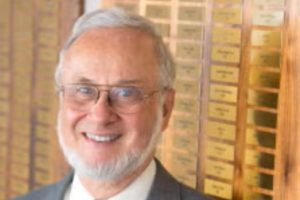
Abstract: A novel representation known as the evolutionary s-reps is suitable for representation of models of anatomic objects that can encompass geometric features, image intensity based features, genetic features, etc. Evolutionary s-reps can be used for shape-based classification of anatomic objects, hypothesis testing on shape variations between classes of anatomic objects, and segmentation of anatomic objects, all of which require training on example cases and then can be applied on cases under study. The evolutionary s-reps and example applications will be discussed. This new representation provides better statistics than alternatives because it is based on geometry not just on the object boundary but also on the interior, on second-order and not just positional (0th order) features, and on finding for each case a diffeomorphism from a basic, ellipsoidal object in a way respecting an unusually rich set geometric properties.
Bio: My PhD dissertation, in 1967, was the first in medical image computing, and I have been teaching, writing, and doing research in that area continuously since my first summer job at Massachusetts General Hospital in 1962 and since my joining the UNC Computer Science faculty in 1967. I have had many collaborations across the UNC Medical School, in some of whose departments I have had adjunct appointments. I led the committee that led to the formation of the Biomedical Research Imaging Center at UNC. 61 PhDs have been produced with me as principal advisor.
My early research emphases were on image quality restoration and on 2D and 3D display, as well as related models of human vision. I helped advise Charles Metz’s dissertation in that area, and we collaborated for some years, including a paper that was an early component of the EM algorithm. However, for the last 4.5 decades my focus has been on geometric models of anatomic objects especially suited for statistics, statistical analyses of these, and the applications of that in diagnosis, treatment planning, and object segmentation and registration, with clinical targets all over the body and with many image sources. Major medical targets were radiation oncology, neuroscience, and recently colonoscopy. The form of model I have developed is skeletal, and in particular what we call the evolutionary s-rep, with its advantages over object boundary based models of also locally capturing interior properties such as object curvature and cross-object width and of providing an object-relative coordinate system important in accessing image intensities as they are used for segmentation and registration. Towards diagnosis and other statistical objectives, my statistics professor colleague JS Marron and I have made important contributions in methods of statistics of shape that recognize that object geometry cannot be directly analyzed by Euclidean methods because abstractly it resides on a curved manifold. Most especially, the method called Principal Nested Spheres (CPNS), allowing statistical analysis of directional data, was developed in our laboratory. Collaborations with Kitware, Inc. in software development and tutorials related to shape analysis in the salt.slicer.org toolkit including s-reps uses, especially by Jared Vicory, have been and continue to be important. Successes of a variety of types for statistics on s-reps include the commercial success of the company, Morphormics, now part of Accuray, that we spun off and whose main product at that time, built upon statistics of skeletal models, focused on segmentation of male pelvic organs from CT for radiation treatment planning. Other work showed registrations and segmentations of mobile structures across medical imaging modalities. Our work over the last decade or so shows that our latest form of s-reps that evolve from ellipsoids while according to rich geometric properties of the object interior and boundary yield notable improvements over boundary point distribution models and models based on smooth deformations of means for object representation in classification, hypothesis testing, and production of correspondence across a population of neuroanatomic objects.